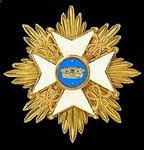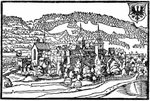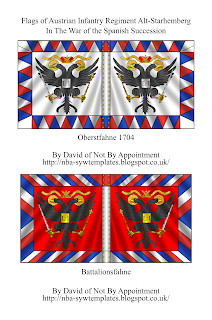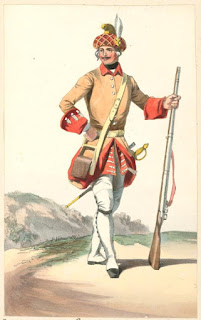Reputedly the oldest regiment in the Austrian army, Alt-Starhemberg was probably first raised in 1642. There is a great deal of detail on the 17th century history of the regiment on the Kronoskaf WSS website.
4 battalions strong in the War of the Spanish Succession. The flags show the insignia of Emperor Leopold 1st, who was Emperor from 1658 and died in 1705, so may well have been carried before 1700 as well as in the WSS.
Service in the WSS:
1701: Sent to the Tyrol for the Invasion of Northern Italy. By mid-June 3 battalions of the regiment were with Prince Eugène's army. 9th July Combat of Carpi where the grenadiers distinguished themselves. 1st September the whole regiment fought well at the battle of Chiari.
1702: 15th August battle of Luzzara
1704: Battle of Crescentino
1705-1706: Still on campaign in Italy
1707: Campaign against Toulon
1708-1712: In Piedmont and Savoy
1713: Defence of Freiburg/Breisgau then moved to the Netherlands where it stayed until 1728
And this was the uniform in 1710:
Uniform and flag details from August Kühn and Robert Hall: Materials On The War of the Spanish Succession 1701-1714: The Imperial Regiments of Foot 1701-1714 Part 21. Historical details from the Kronoskaf WSS website. Note that the uniform details on the Kronoskaf site are totally different and no flag details are given.























